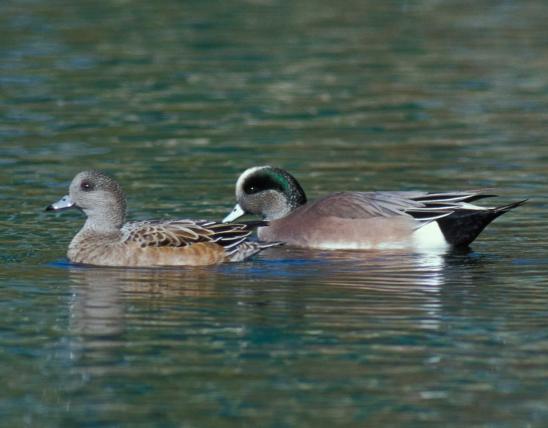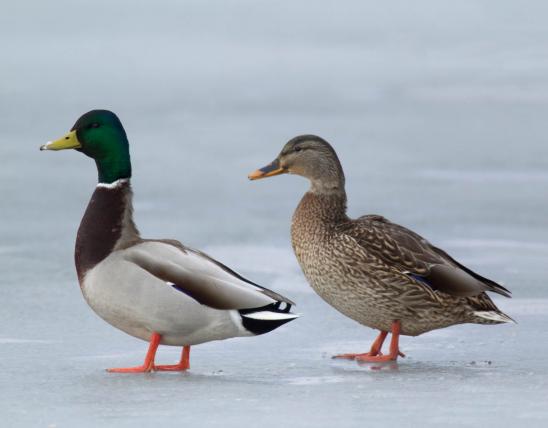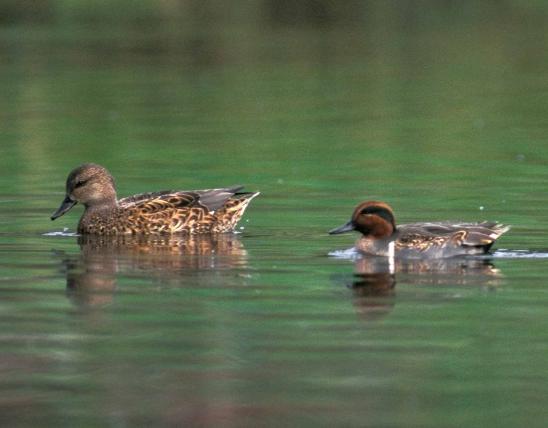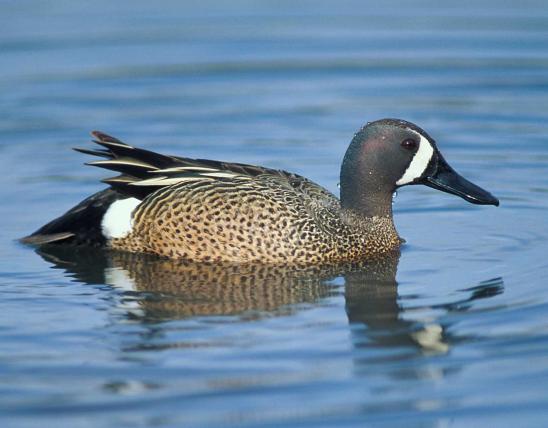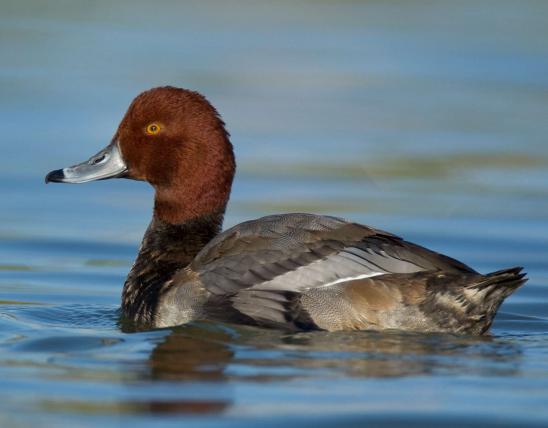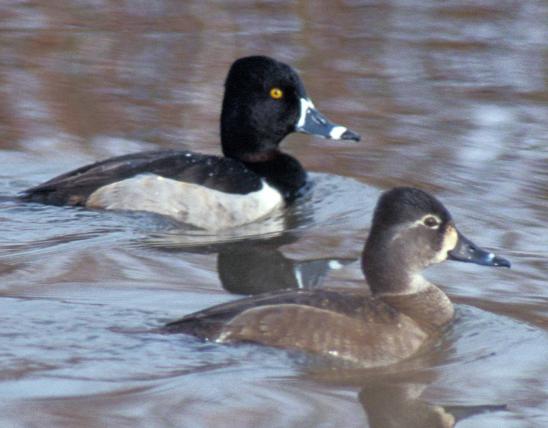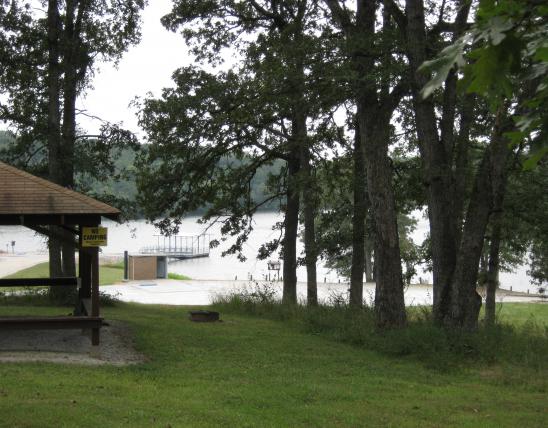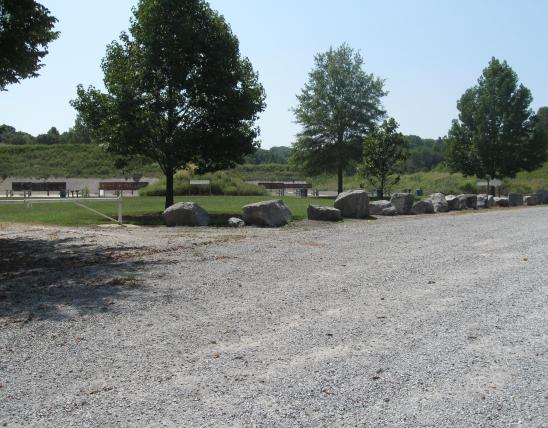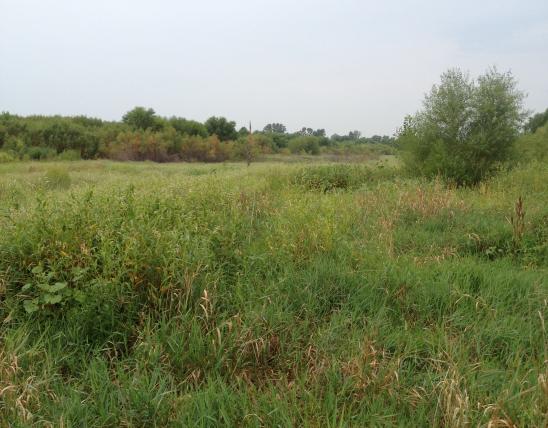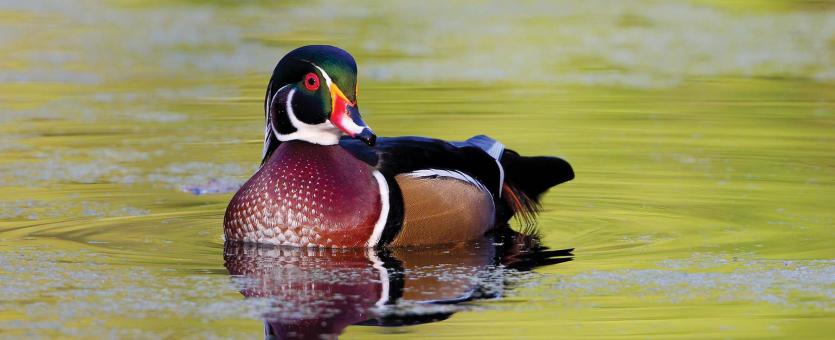
The wood duck is one of the world's most beautiful waterfowl. The plumage of the male is very gorgeous, with chestnut, tan, green, red, and white. The brownish female has a distinguishing white eye ring that tapers to a point behind the eye. If the female's wings are spread, you can see her deep blue wing patch (speculum) that is bordered with white on the feather tips. Males in late summer molt to an “eclipse” plumage that resembles the female’s plumage but with more white on the chin, cheeks, and throat. The female’s flight call is a haunting rising whistle, frequently heard in forested wetlands; this may be the only evidence of the bird’s presence. Males give a soft, high whistle.
Seen in flight, male wood ducks have a blocky-looking head and a long, square tail; their wings make a rustling, swishing sound.
Length: 18 inches (tip of bill to tip of tail).
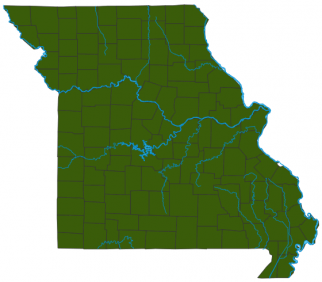
Statewide.
Habitat and Conservation
Common migrant statewide, foraging in swamps, lakes, backwaters of streams, and ponds. Nests in tree cavities usually near water, although often a mile away. Habitat loss and overhunting for meat and plumage caused severe declines in the wood duck’s population by the late 1800s, but federal and state conservation laws helped rescue this species, and artificial nesting boxes have helped increase populations to where they are now stable.
Food
Forages for seeds, berries, and aquatic invertebrates in swamps, lakes, backwaters of streams, and ponds.
Status
Common transient and summer resident; uncommon winter resident (southeast; rare elsewhere).
Life Cycle
Wood ducks form pairs in midwinter and usually have two broods a year. Clutches comprise 6–16 eggs, which are incubated 28–37 days. The young are covered with down when they hatch and jump from the nest cavity a day after hatching. Nest cavities can easily be 60 feet aboveground and are usually at a place where a branch has fallen off a tree, exposing a rotted, hollow place in the trunk. Wood ducks also readily use specially made nest boxes.
Human Connections
Popular with duck hunters and with just about anyone able to see their stunning plumage, wood ducks declined because of human actions. They also rebounded because humans made the decision to enact laws to protect this and many other species, and their habitats.
Put up nest boxes for wood ducks in early March.
Ecosystem Connections
Wood ducks are mostly herbivorous, eating mostly plant foods, including seeds, nuts such as acorns, fruits, and leaves. They also eat small invertebrates. In turn, wood ducks are preyed upon by animals such as hawks. Wood ducks therefore play an intermediate role in the food chain, transforming plant nutrients into a form that predators can consume.
Wood ducks are particularly vulnerable to predation during nesting and when the chicks are incapable of flight.
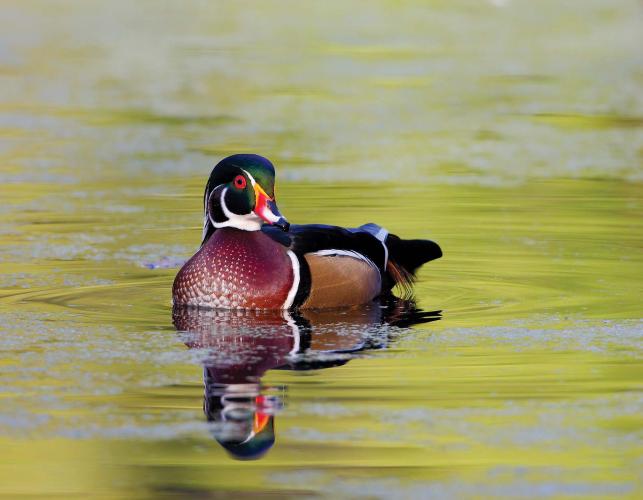
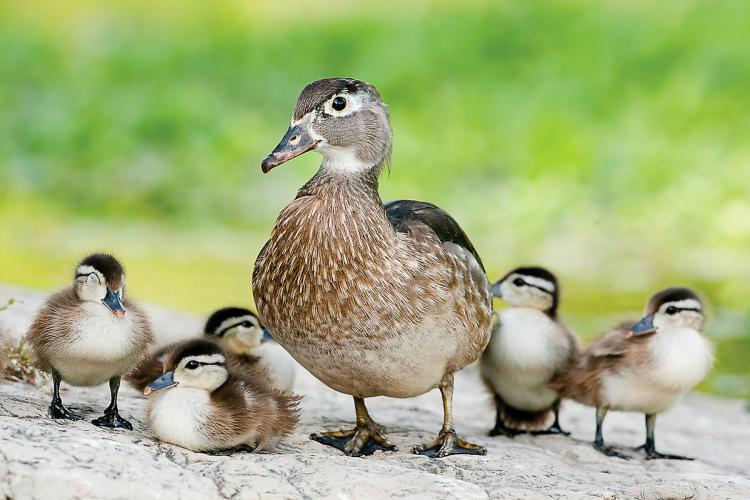
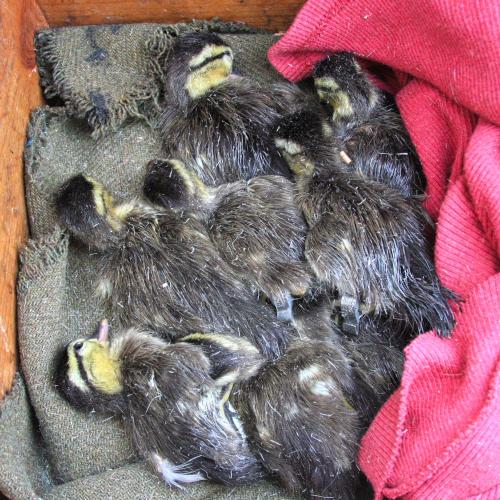
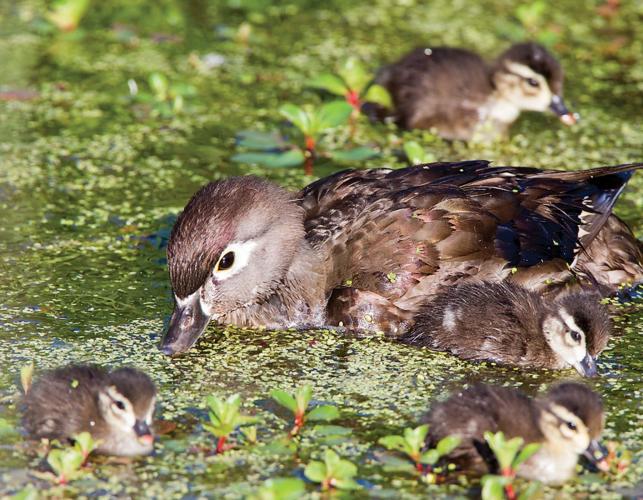
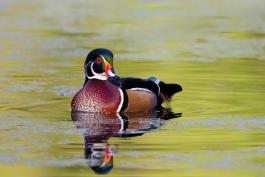
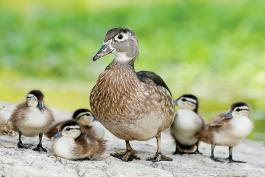
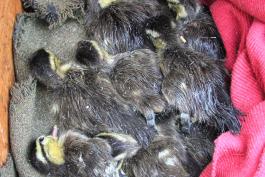
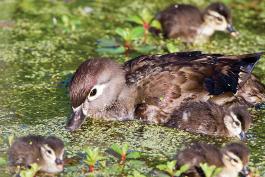
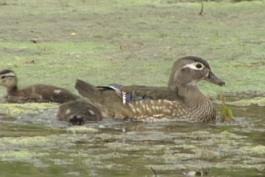
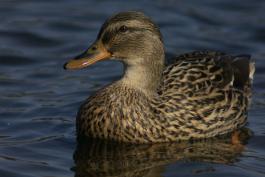
Where to See Species
About 350 species of birds are likely to be seen in Missouri, though nearly 400 have been recorded within our borders. Most people know a bird when they see one — it has feathers, wings, and a bill. Birds are warm-blooded, and most species can fly. Many migrate hundreds or thousands of miles. Birds lay hard-shelled eggs (often in a nest), and the parents care for the young. Many communicate with songs and calls.






















